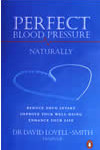The first line of defense involves changing one’s living habits
 Most people with angina learn to adjust their lives to minimize episodes of angina, by taking sensible precautions and using medications if necessary.
Most people with angina learn to adjust their lives to minimize episodes of angina, by taking sensible precautions and using medications if necessary.
The underlying coronary artery disease that causes angina should be attacked by controlling existing “risk factors.”
These risk factors include:
- high blood pressure
- cigarette smoking
- high blood cholesterol levels
- and excess weight
Usually the first line of defense involves changing one’s living habits to avoid bringing on attacks of angina. Controlling physical activity, adopting good eating habits, moderating alcohol consumption, and not smoking are some of the precautions that can help patients live more comfortably and with less angina.
For example, if angina comes on with strenuous exercise, exercise a little less strenuously, but do exercise. If angina occurs after heavy meals, avoid large meals and rich foods that leave one feeling stuffed. Controlling weight, reducing the amount of fat in the diet, and avoiding emotional upsets may also help.
Angina is often controlled by drugs. The most commonly prescribed drug for angina is nitroglycerin, which relieves pain by widening blood vessels. This allows more blood to flow to the heart muscle and also decreases the work load of the heart. Nitroglycerin is taken when discomfort occurs or is expected.
Other drugs frequently prescribed to help reduce the heart’s workload include Beta blockers which slow the heart rate and lessen the force of the heart muscle contraction and Calcium channel blockers are also effective in reducing the frequency and severity of angina attacks.
When drugs fail to ease angina or if the risk of heart attack is high your health professional may recommend surgery or angioplasty. Coronary artery bypass surgery is an operation in which a blood vessel is grafted onto the blocked artery to bypass the blocked or diseased section so that blood can get to the heart muscle. An artery from inside the chest (an “internal mammary” graft) or long vein from the leg (a “saphenous vein” graft) may be used.
Balloon angioplasty involves inserting a catheter with a tiny balloon at the end into a forearm or groin artery. The balloon is inflated briefly to open the vessel in places where the artery is narrowed.
 Then you need to read this book, by New Zealand author, Dr. David Lovell-Smith.
Then you need to read this book, by New Zealand author, Dr. David Lovell-Smith.
In this book Dr. David Lovell-Smith describes how his patients successfully used diet, lifestyle changes and Transcendental Meditation to bring their blood pressure down.
This book offers new hope and insight for those with high blood pressure but it is not for hypertensives alone. The knowledge which Dr Lovell-Smith presents in his book is timely and relevant, and its exposition is long overdue.
Shop price is $34.95 Our price is $25.00 (including postage – NZ only)
